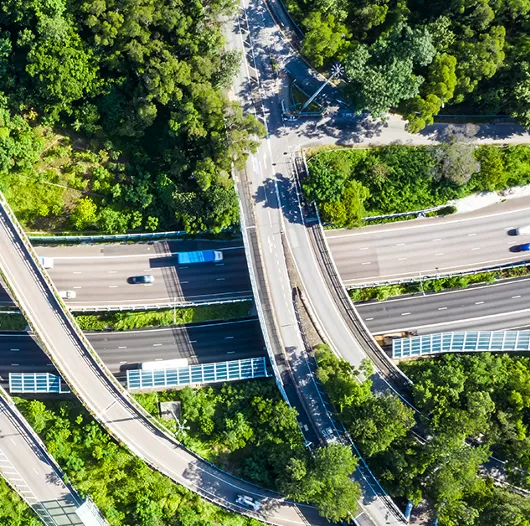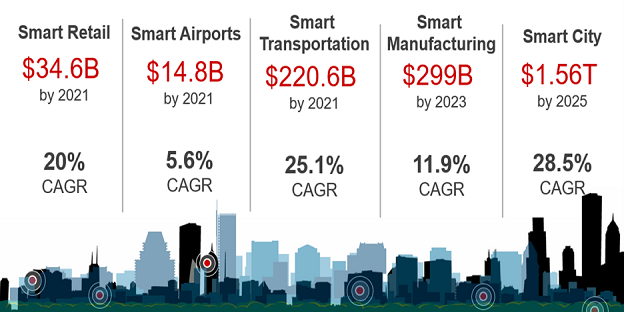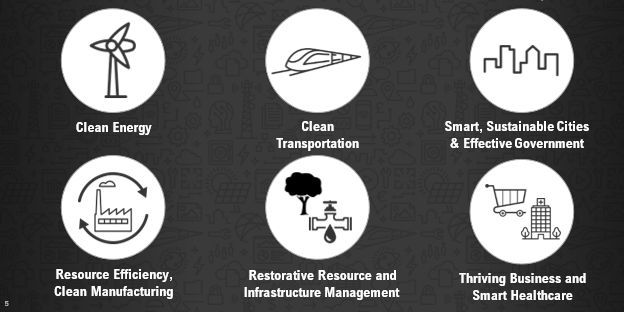Sustainable Communities: Leading a New Epoch in Resource Efficiency


Sustainability used to be viewed as a great goal, but one we didn't need to consider seriously until sometime in the future.
Well, the future is now.
In boardrooms and government planning sessions around the world, sustainability features as a central agenda item as the public and private sectors look to meet the unique challenges of the new century. It's a particular focus of many localities where municipality leaders are adopting sustainability initiatives to help their cities and local economies cut costs, reduce waste, and improve the lives of constituents. Indeed, Frost & Sullivan predicts the creation of sustainable urban spaces and smart cities has the potential to account for a $1.56 trillion market by 2025.

The market for smart cities is substantial and a large portion of that investment will go to make cities safer, more sustainable and efficient. Source: Markets and Markets, Frost & Sullivan
Let's also note that more than 60% of the energy we consume is being consumed in cities. So, if we can find ways to make urban living more efficient, we will, by definition, make the world a more sustainable place for humans and all the other animal species with whom we share the planet.
How would this work in practice? It's already happening. Consider the following:
When we think about sustainability initiatives, what's exciting is the promise to further a more restorative approach to resources and infrastructure management. This can apply everywhere, from school campuses to cities, and from shopping malls to large office buildings. On a smaller scale, you can already find this resource-conscious approach being demonstrated in urban spaces that use nonpotable water for flushing toilets, as opposed to relying on energy and chemicals to create and use fresh, treated water.

The design of smarter, more sustainable communities and cities is among the largest opportunities to create social good.
Elsewhere, consider the implications for construction. The building construction sector accounts for 39% of energy and process-related CO2 emissions, including 11% from the manufacturing of building materials and products. Optimizing the use of existing buildings to improve resource efficiency would help to extend the usefulness of s buildings and, in the process, also benefit the environment.
All this is still relatively new and, unfortunately, many projects don't get past the proof-of-concept stage. This stoppage may occur because they fail to provide sufficient business value, the cost is too high (and the value is too low), or the social and business return on investment (ROI) do not add up. The way to break that logjam is by determining opportunities that offer high impact and business value, but don't involve technical complexity or high costs. Then you can unlock high-value opportunities that are socially rewarding and business efficient.
A data-first infrastructure with data-driven software and services along with the requisite consulting and expertise is a core requirement to power this transformation. When it comes to sustainability, let's not ignore the undeniable nexus between efficient urban spaces and the deployment of a robust data infrastructure. With the right connective tissue, users can gather, store, catalog and contextualize vast amounts of information to achieve better visibility and become more effective in their jobs. That's the prerequisite for administrators to use their data management infrastructure to promote smarter, safer, and more sustainable regions.
And this is not just a First World story. In India's south-eastern coastal region of Andhra Pradesh, where more than 50 million people live, data-driven operations are underway on several fronts. Hitachi Vantara worked with local officials to integrate data from more than 33 different government departments to provide them with a way to make data-driven decisions for the first time.
Infrastructure now monitors water reservoirs so that managers can proactively swing into action to avoid disaster scenarios if water levels surpass critical points, as they would during typhoons. At the same time, they can divert water to needed areas when supplies get too low.
Agricultural departments now have access to data about what can and should be grown in particular areas and can better advise farmers on the conditions appropriate for growing different crops. That translates into less waste and better prices for farmers along with more diverse, locally sourced food for their communities. It also helps reduce emissions pollution by cutting down on shipping.
That same infrastructure also provides for improved performance in local emergency services so managers can see where their ambulances, fire trucks, and police resources are located in real time. Then they can deploy their fleets, accordingly, targeting them at the right places at the right times.
Our Andhra Pradesh initiative proves a larger point: As local and regional governments, get more of this data into their hands, they will be more informed about what's going on within their jurisdictions. They'll be able to do something about improving their performance. This is almost a virtuous circle: As governments become more responsive to the needs of their citizens, they'll also be reducing pollution and waste. This changes the concept of sustainability from a feel-good slogan to strategic initiative.
When we talk about creating smart, sustainable spaces, the range of possibilities is limitless. This is about making everything, from shops to campuses, and from factories to the transportation ecosystem, more intelligent. And to be "smart" they'll all be part of a connected ecosystem that realizes the lofty ambitions behind building smarter societies.
But what does all this have to do with sustainability? Spoiler alert: a lot.
When the operators of a company in a smart space can see where customers are entering the store, which areas they stop in front of, which products they visit, in what order, and for how long — all that data can help them run a smarter business. The data supports greater sustainability by helping them get the right products in front of their customers. The upshot: They're effectively using their space so that supply really meets demand.
This would be a boon for retailers selling food, clothing and a myriad of other products and materials that might sit on store shelves for a long time without getting purchased by customers. Ultimately, such products wind up getting discounted, sold to discount outlets or sent to the scrap heap. The smarter use of data avoids this sort of needless — and unprofitable — waste, thanks to improved decision-making, better inventory choices, and more effective use of a store's square footage.
Here's another example how this can work in practice. Hitachi Vantara worked on a project with Curtin University in Perth, Australia, to figure out the campus flow patterns of its 60,000 students and better understand the daily occupancy levels. Ultimately, the university was able to improve the design of the campus before committing to a major construction project. As a result, they were able to reduce emissions, scaling down the original project and avoiding waste — all the while using their existing resources more efficiently.
Ultimately, we need to broaden how we think about sustainability. It's not only about saving the planet: It's also about bringing in extra profit while we tackle the vast problems facing the planet — everything from resource exploitation to climate change and species extinction.
One need not be in opposition with the other: Sustainability can support our economy. In the end, our economy operates within an ecology. Taking care of that environment will enable us to have the way of life that we seek to preserve.
Relevant Hitachi Links:
Smart City Spaces - Improve Traffic and Parking | Hitachi Vantara
Smart Spaces - Improve Safety and Efficiency | Hitachi Vantara
Check out more great stories on Insights.

Bjorn has worked in technology development, product management and marketing for +25 years, with a focus on sustainability, digital transformation, analytics, visualization, HPC and IoT. Today, he provides strategic leadership for select industry practices at Hitachi Vantara.